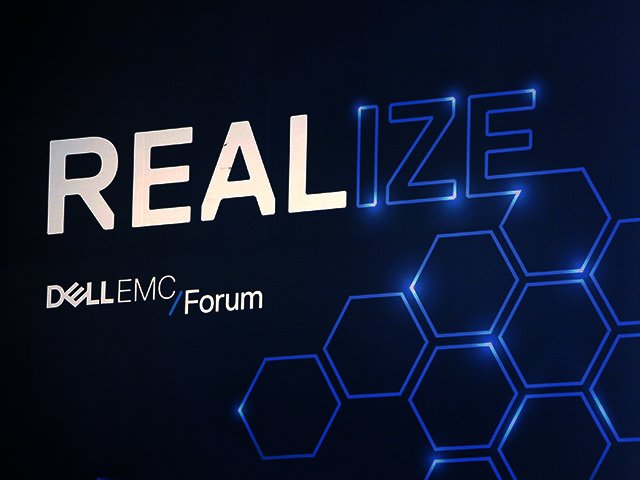Dell EMC Forum Part 3: Embarking on the digital transformation journey
By Ryan Noik 9 April 2018 | Categories: feature articles
One of the highlights of the Dell EMC Forum, which took place in Sandton recently, was the opportunity to sit down with Brad Pulford, the director of the Enterprise Solutions Group, Dell EMC South Africa. He offered a deeper insight into digital transformation, the role modernised infrastructure plays and delineate some key questions enterprises can ask to begin their IT infrastructure transformation journey.
To start, Pulford offered a succinct understanding of what digital transformation actually is and why it is garnering so much attention at present. “In essence, the move towards adopting digital transformation is based on companies getting worried about whether they are relevant today or becoming irrelevant. Digital transformation essentially means accessing technology to make your organisation significant in this industrial revolution that we are going through,” he explained.
The good news is that leveraging technology to transform entire industries is not something that has never been done before. Pulford elaborated that, for example, in the 1880s, massive oil rigs would produce 2000 barrels of oil per year. But, fast forward just 15 years, and the application of new technology for that time enabled 2000 barrels to be produced every 17 minutes by the early 1900s.
It is not without coincidence then that information, and data, has been declared the new oil as the world looks set to take another leap forward. “So whether you are talking about hundreds of years ago or whether you are looking at the present day, ensuring that your company is relevant is what is critical, and in order to do that you need to embrace digital transformation,” he stressed.

Brad Pulford, director Enterprise Solutions Group, Dell EMC South Africa.
Stronger together
As to how that is done, that is what the extensive explorations into the pillars of transformation, which were discussed during the Forum, aimed to accomplish.
Pulford continued that the pillars of transformation - security, IT, workforce and digital - don’t operate in silos, but rather work in unison. Additionally, he noted that companies don’t need to start with one of these arenas over any other, but each are largely reliant on the others being present.
With these four distinct transformations that companies need to undergo though, it can seem like a daunting prospect. Where then, does a company that accepts the necessity of transformation begin?
Pulford had some advice to this end, encouraging enterprises to start with their IT infrastructure transformation, as it is critical to enabling and empowering the success of digital transformation. “If you are looking at your digital transformation needs as it relates to driving performance, efficiency and automation in your organisation, that is going to be very reliant on having a strong architecture,” he elaborates.
He further advised that any company aiming to embrace digital would best be served by ensuring that their security needs are taken care of from the outset. Indeed, security scandals and the ramifications of breaching trust and privacy can touch the biggest and mightiest of companies, with most recently Facebook finding itself in the firing line, proving just that.
However, referencing Nigel Moulton’s keynote address on the importance of embracing geometric thinking, Pulford enthused that the components of transformation can also be synergistic, producing a whole that is greater than the sum of the parts.
First steps forward
Taking the point of view that a company wishing to start with IT transformation, Pulford explained Dell EMC’s approach, and elaborated on how companies could start on their journey. It would begin with an assessment of what hardware enterprises currently have in place and whether this is sufficient for the performance they require.
Another key consideration is what companies are aiming to do with their information. “Many organisations have unstructured and structured data, and they don’t know what to do with it. They may even have a storage array somewhere or maybe they have started thinking about this ’cloud thing’ and they are actually just running backup to a service provider which they call cloud,” he continued. This kind of fragmented approach to their infrastructure does them no favours.
Gaining clarity
Additionally, organisations can further consider a few key questions. “Companies can ask themselves whether they are running in an all flash environment. If they haven’t moved to a flash environment, they are probably not maximising the potential of their environment and creating the performance that they need. Secondly, what kind of cloud adoption have you been through at the moment? Cloud adoption is not an end state, it is a journey. Often, when we go look at what workloads are running on premise, typically most businesses we speak to haven’t really adopted the cloud yet,” he continued.
No less important is the hyper-converged infrastructure issue. Pulford encouraged reviewing one’s modern infrastructure, and asking whether IT is still being procured in the traditional sense, where you might buy a server here and some storage from someone else.
“Are you scaling out or are you still scaling up? That becomes a critical question, and a lot of people are still very reliant on a traditional data centre which you need a lot of knowledge and skill around it, so that becomes critical,” he concluded.
In the next article, Pulford continues by exploring how applications have changed, and speaks to the biggest obstacle to digital transformation and how it can be addressed.
Most Read Articles

Have Your Say
What new tech or developments are you most anticipating this year?



